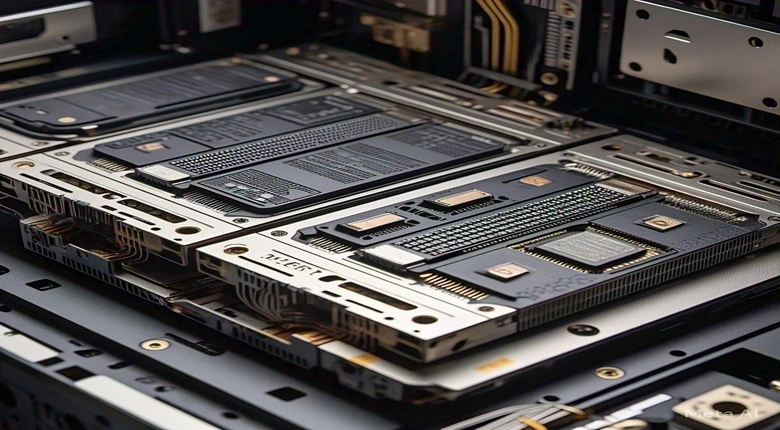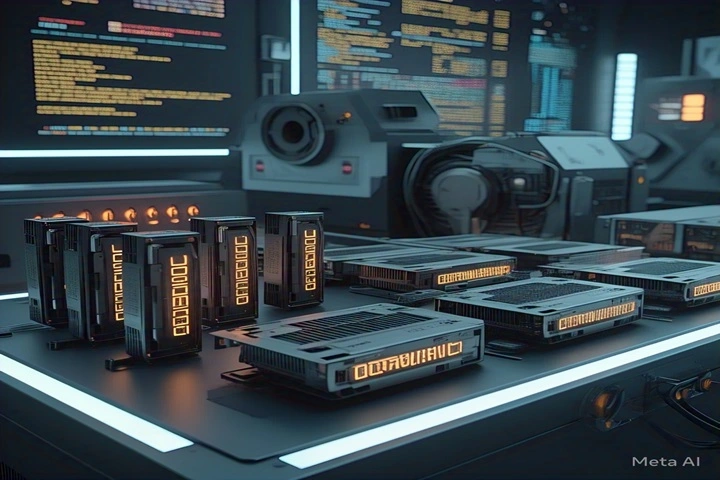Technology moves fast, and memory upgrades are no exception. With DDR5 memory still finding its place in many systems, there’s already talk of its powerful successor: DDR6 RAM.
If you’re a gamer, a tech enthusiast, or someone planning a PC build, you might be wondering: should I wait for DDR6?
This article breaks down everything you need to know about this upcoming RAM generation, including its speed, features, comparison with DDR5, and the expected DDR6 RAM release date.
What is DDR6 RAM?
DDR6 RAM is the next-gen RAM performance upgrade that follows DDR5. It’s being designed to offer much faster memory speeds, better power efficiency, and more advanced memory channels than anything we’ve seen before. With DDR6 memory, data can move at extremely high rates, which means smoother gaming, quicker load times, and better multitasking.
This new DDR6 architecture is focused on boosting both performance and stability. Features like on-die ECC, off-die ECC, and improved signal integrity are being added to make it more reliable, especially for RAM for servers and memory for AI systems.
And it’s not just about speed—DDR6 RAM aims to use less energy, thanks to a new power management IC (PMIC) and dynamic voltage and frequency scaling (DVFS), which adjust power based on real-time needs.
DDR6 Release Date: When is it Coming?
The DDR6 RAM release date is not officially confirmed, but development is in full swing. According to JEDEC, the organization that defines RAM standards, the DDR6 spec 1.0 is expected to be ready by Q2 of 2025. The DDR6 final specification could be done by late 2025, meaning the first products may hit the market by early 2026.
The DDR6 launch timeline depends heavily on manufacturers like Samsung, Micron, and SK Hynix, who are already working on prototypes. Right now, we’re in the DDR6 draft specifications phase, but the DDR6 roadmap suggests it’s right around the corner.
If you’re wondering “is DDR6 coming in 2025?”, the answer is yes—though availability may be limited at first, focusing on enterprise RAM solutions and RAM for servers before making its way to RAM for gaming PCs.
Key Features of DDR6 RAM
The new DDR6 RAM features explained here show why this upgrade is exciting. One of the biggest highlights is the jump in DDR6 MT/s. Standard speeds will start around DDR6-12800, doubling what DDR5 can do.
And overclocked DDR6 versions might hit DDR6-17600 or even the ultimate target: DDR6-21000.
Another major upgrade is in the memory channels. DDR5 uses two 32-bit sub-memory channels, but DDR6 will feature four 16-bit sub-memory channels, allowing more data to move simultaneously. This increases memory module capacity and helps reduce memory latency.
RAM voltage is also dropping. With less than 1.1V required, DDR6 RAM will consume less power. Combined with its smarter PMIC and DVFS, it qualifies as a low power RAM solution. It’s built to be both powerful and efficient, which is ideal for both laptops and high-performance desktops.
Performance Comparison: DDR5 vs DDR6
To see how DDR6 vs DDR5 stacks up, take a look at this table:
| Feature | DDR5 | DDR6 |
|---|---|---|
| Base Bandwidth | 4,800 MT/s | 12,800 MT/s |
| Max Overclocked Speed | 8,400 MT/s | 21,000 MT/s (projected) |
| Memory Channels | 2 x 32-bit | 4 x 16-bit |
| Voltage | ~1.1V | <1.1V |
| Burst Length | 16 | Up to 32 |
| Capacity Per DIMM | 128GB | 256GB |
| ECC | On-die ECC | On-die & Off-die ECC |
The benefits of DDR6 over DDR5 are clear. From higher data rate, better burst length, to reduced power consumption, it’s a big leap forward. This makes DDR6 performance ideal not just for future gaming setups but also for AI, machine learning, and professional workloads.
Future of DDR6: Targeting DDR6-21000
Looking ahead, the long-term goal for DDR6 RAM speed is DDR6-21000, which is more than double the current DDR5 performance ceiling. Companies like Synopsys have shared technical details about how we might reach those speeds.
The plan includes changes in signaling methods like PAM (Pulse Amplitude Modulation) and improved DDR6 architecture to handle such extreme data rates.
When these top speeds are reached, DDR6 RAM will deliver high-bandwidth memory that can transform how we experience computing. It won’t just be useful for gamers—it will power massive server workloads, complex AI models, and maybe even future game streaming services.
Why DDR6 is a Game-Changer for PCs & Gaming
If you’re building or upgrading a system, one question you might have is: “Should I wait for DDR6?” And the answer depends on what you need. If you’re chasing the best RAM for gaming 2025, then DDR6 memory will likely be the new standard. It’s fast, efficient, and future-ready.
For gamers, this means smoother FPS, faster game loading, and more stable multitasking while streaming or editing.
For content creators, it’s about quicker rendering and smoother editing timelines. With support for more memory channels, higher memory module capacity, and reduced memory latency, DDR6 RAM could redefine the RAM upgrade market.
Expert Insights & Industry Expectations
Industry leaders are optimistic. A spokesperson from Samsung noted that their R&D team is heavily focused on bringing DDR6 RAM to market by 2025. Micron and SK Hynix are also working with JEDEC DDR6 spec groups to refine performance and stability.
Intel’s next-gen platforms might not support DDR6 compatible CPUs right away, but future chips likely will. AMD DDR6 support is still unclear, as the AM5 socket may continue with DDR5 for a while. However, as new DDR6 motherboards roll out, adoption will speed up.
DDR6 in AI, Machine Learning, and Data Science
Beyond gaming and general computing, DDR6 RAM is expected to play a critical role in AI (Artificial Intelligence), machine learning, and data science workloads. These applications require fast and reliable memory to process vast amounts of data in real-time.
DDR6’s significant boost in bandwidth and its enhanced ECC (Error Correction Code) support make it ideal for training deep learning models and handling inference at scale.
With growing demands in industries like autonomous vehicles, robotics, and big data analytics, DDR6 will be the backbone for next-gen AI frameworks, allowing faster model convergence and more stable multi-GPU training environments.
DDR6 RAM for Laptops, Tablets, and Mobile Devices
One of the lesser-discussed yet promising impacts of DDR6 lies in its mobile and portable device integration. Thanks to improved power efficiency and voltage optimization, DDR6 RAM could be introduced into high-performance laptops, tablets, and even flagship mobile devices.
Features like Dynamic Voltage and Frequency Scaling (DVFS) allow DDR6 to adjust power usage in real time, making it suitable for thin-and-light ultrabooks that previously couldn’t handle such high-speed modules.
This shift could bridge the gap between desktop-grade performance and mobile portability, unlocking powerful new use cases for creators, engineers, and mobile gamers on the go.
Thermal Management and Cooling Innovations
As performance increases, so does heat—and DDR6 RAM is no exception. With its projected top speeds of up to DDR6-21000 MT/s, thermal management becomes a crucial part of its deployment, especially in compact or high-density systems.
Manufacturers are expected to develop new heat spreaders, thermal interface materials, and built-in temperature monitoring solutions to prevent overheating and throttling. Additionally, DDR6-ready motherboards will likely feature enhanced airflow designs or even integrated RAM cooling systems to support continuous high-speed operation.
These innovations will ensure stability during overclocking or under sustained workloads, especially for gaming, rendering, or scientific simulations.
Early Adoption Challenges and Compatibility Issues
As with any cutting-edge technology, early adopters of DDR6 RAM will face some hurdles. The transition from DDR5 to DDR6 won’t be seamless—users will need DDR6-compatible motherboards and CPUs, which may not be widely available until late 2025 or early 2026.
There’s also no backward compatibility, meaning existing systems will require a complete platform upgrade. Additionally, the first wave of DDR6 modules may come at a premium price, and firmware or BIOS support could take time to mature.
Developers, gamers, and professionals who rely on stability might prefer to wait for second-gen DDR6 hardware to enjoy better performance-to-cost ratios and fewer bugs.
Frequently Asked Questions
Q. What is DDR6 RAM?
A. DDR6 RAM is the sixth generation of double data rate memory, designed to replace DDR5 with better speed, power efficiency, and performance.
Q. When will DDR6 RAM launch?
A. The DDR6 release date is expected around late 2025 or early 2026, following final approval of the DDR6 spec 1.0.
Q. How fast is DDR6 RAM?
A. Base speed starts at DDR6-12800, with overclocked DDR6 modules aiming for DDR6-21000.
Conclusion: Should You Wait for DDR6?
DDR6 RAM is shaping up to be a massive upgrade. With ultra-fast DDR6 MT/s, improved ECC, smart power handling, and double the bandwidth of DDR5, it’s clearly made for the future. The DDR6 transition will start slowly, beginning with RAM for servers and then spreading to gaming and laptops.
If you’re planning a PC build right now, DDR5 is still a great choice. But if you’re targeting late 2025 or beyond, and want a truly future-proof RAM setup, then waiting for DDR6 availability makes sense. As always, the best RAM is the one that fits your needs, budget, and timing.
Stay tuned, because the world of high-performance memory is about to get a serious upgrade.













